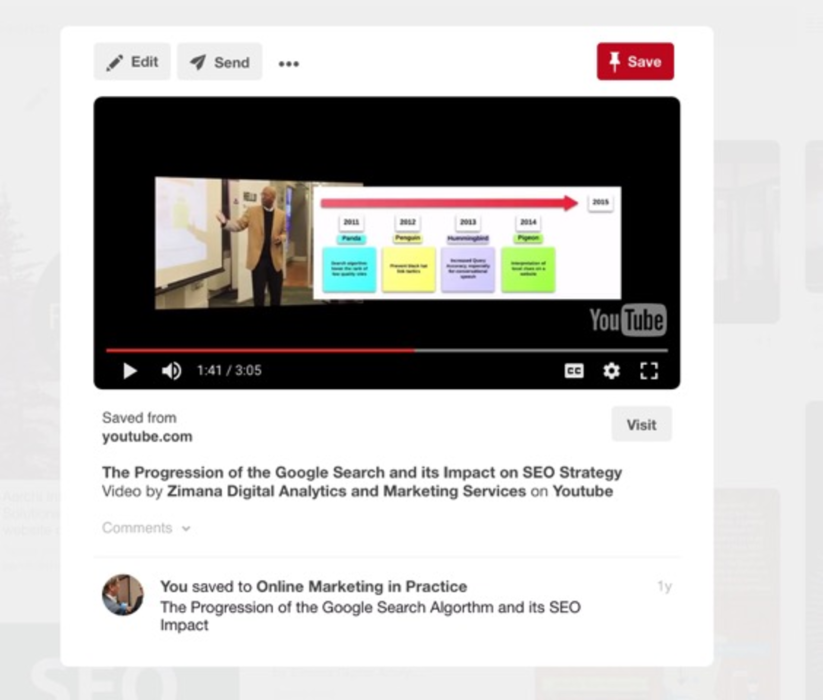Can you sell products on social media?
Marketers may have once doubted the possibility of doing so, but there’s no doubt today that retailer interest in social commerce is rising, and has been rising steadily over the years as social became an important part of the mobile nexus, along with the willingness to make purchases via mobile. For example, Business Insider reported last year that the top 500 retailers earned $3.3 billion from social shopping in 2014, a 26 percent increase over 2013.
The result? Consumer interest in products and services is leading to sales, as customers are becoming more comfortable using their phones for online purchases or to complete purchases in-store. How then should marketers and retailers think about marketing for each social media platform? Here are a few observations that can strengthen your strategy development.
The largest social media platform has been refining user options for expressing themselves—from emoticons to live video. Marketers can best leverage Facebook through video by using Facebook Live to speak with business page followers. Many businesses of all scales, such as The Bassline Group in Chicago, use video to connect with customers regularly.
Here are some ideas for Facebook Live content:
- Product launches and demonstrations: Comments from followers can provide feedback that can become valuable insights when a new product is being revealed.
- Customer service sessions: Troubleshooting problems with devices or products can incorporate responses from followers, treating it as as face-to-face with a real person.
- Q&A sessions: Q & A sessions offer opportunities to build customer rapport and trust. Marketers can invite experts to help answer product or service questions from your customers.
Many of these ideas can be conducted through a video platform. Using Facebook Live from a mobile device requires the Pages Manager App.
Facebook is also a dominant advertising platform among social media platforms. Ads enhance strategy in conveying messages to customers, and Facebook ads have been effective in reach, especially in mobile. Marketers should look to use Facebook ads as a means to connect to customers on the go.
Marketers can also look forward to more Facebook refinements, and for good reason. Marketing Land reported that Facebook will reach maximum News Feed ad load during 2017. This means Facebook must experiment with new ways to deliver ads and other marketing features to continue its revenue growth.
Twitter has always been a means for connecting to people outside of a customer base. Past social media strategies have suggested that Facebook pages tend to attract customers familiar with your brand, while Twitter profiles tend to attract people who are seeking your products and services, consequently discovering your business.
Twitter has striven to provide features that deepen engagement. Industry analysts have been critical of recent trends that suggest waning user interest in Twitter. Brands interested in immersive advertising experiences have demanded more segmentation features. In response Twitter has introduced ad groups, a campaign feature that customizes according to segment. It has revised its analytics dashboard to improve campaign measurement.
Marketers should also consider Twitter as an opportunity to provide customer service. According to Twitter, an Applied Marketing Science study confirmed that customer service on Twitter influences sales. Providing customer service through social channels like Twitter can be a fast way to connect to customers and let them know that their needs are indeed heard. But marketers must verify that customers are comfortable using Twitter before initiating or expanding customer service resources.
Pinterest has become a search engine, according to Marketing Land. Users pin Pinterest images after discovering products, services, and brands they like the most. This planning reflects the potential of future purchases.
Marketers can strategize on this behavior by creating a preview board in Pinterest—teaser images and ideas that let followers know about what’s to come. YouTube videos can also be embedded in a pin—at the top of this article is one I made for a presentation as an example. Cultivating a preview board keeps users engaged and builds a following that eventually leads to sales.
Retailers and brands are discovering how inspirational posts on Instagram can raise branding impact. New tools, such as Instagram Analytics, are starting to help marketers manage that impact. These tools are meant to leverage the best aspect of Instagram—presenting unique images and video that show how a product or service is used among consumers, or reflect the quality of a product.
The content can range from lifestyle associations, such as hiking with Timberland boots, or showing how boots are manufactured to exacting standards. Overall, images should augment the imaginative connection customers have with brands.
Supplementing Social Media Strategy With Analytic Tools Is Now A Must
No matter what combination of social media is used, marketers should also examine advanced dashboards options that blend social media data into a central graph. Options run the gamut from Supermetrics—a service that lets you pull data from an Excel sheet into Google Data Studio and then into a dashboard. R programming models can also be used to predict trends. These tools can determine which platforms are best in referring traffic to retailers’ websites and apps.
Can you sell products in social media? Customer response appears to make that answer an emphatic “Yes!” But it is up to marketers to make sure they listen to how that yes is expressed, and use that knowledge to inform their social strategy.








